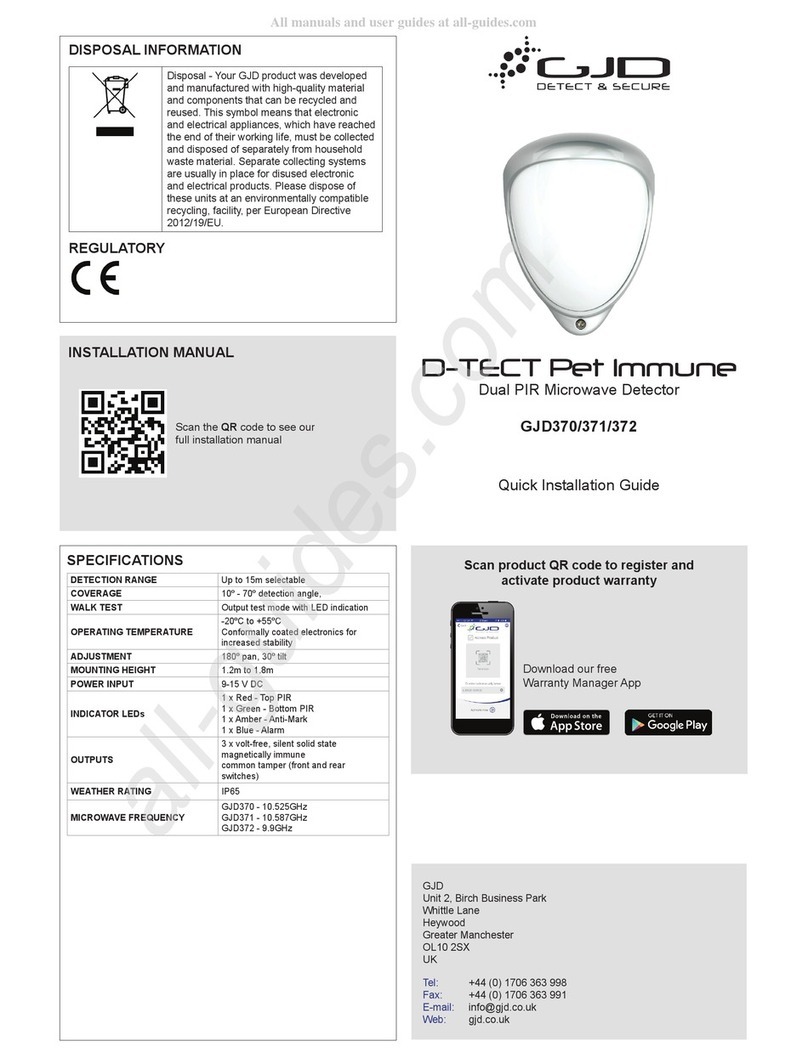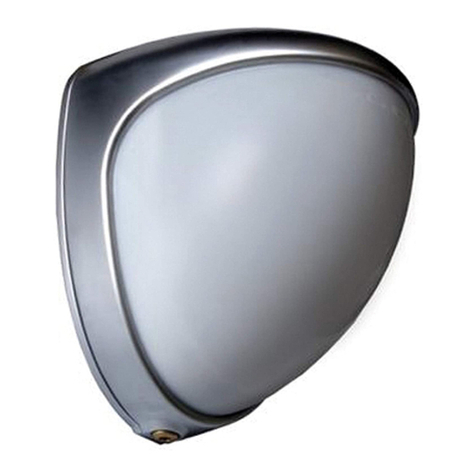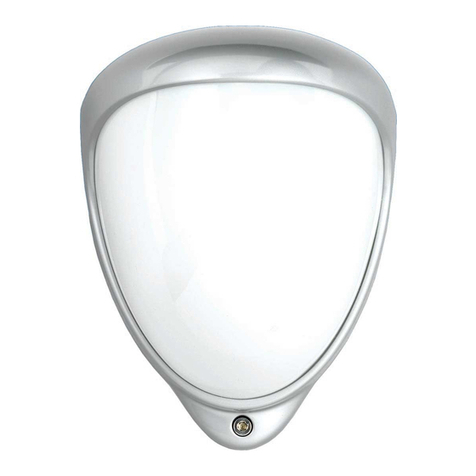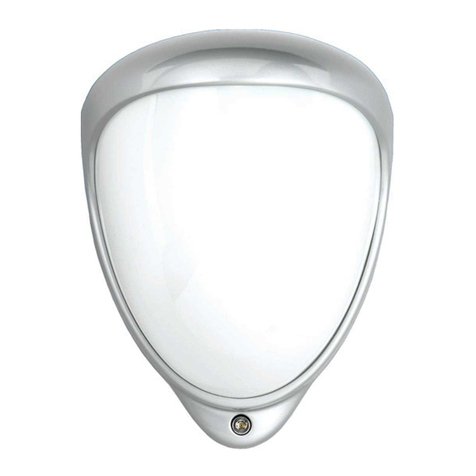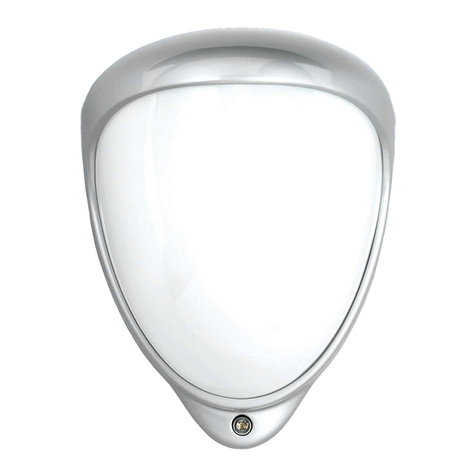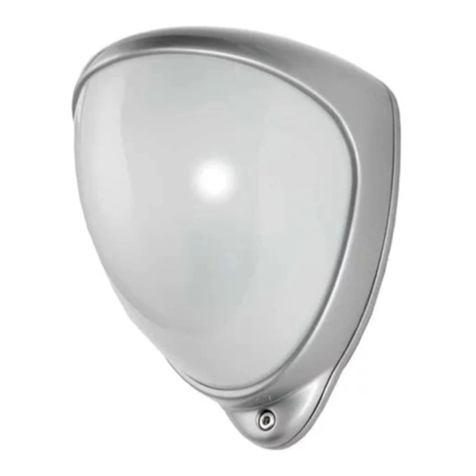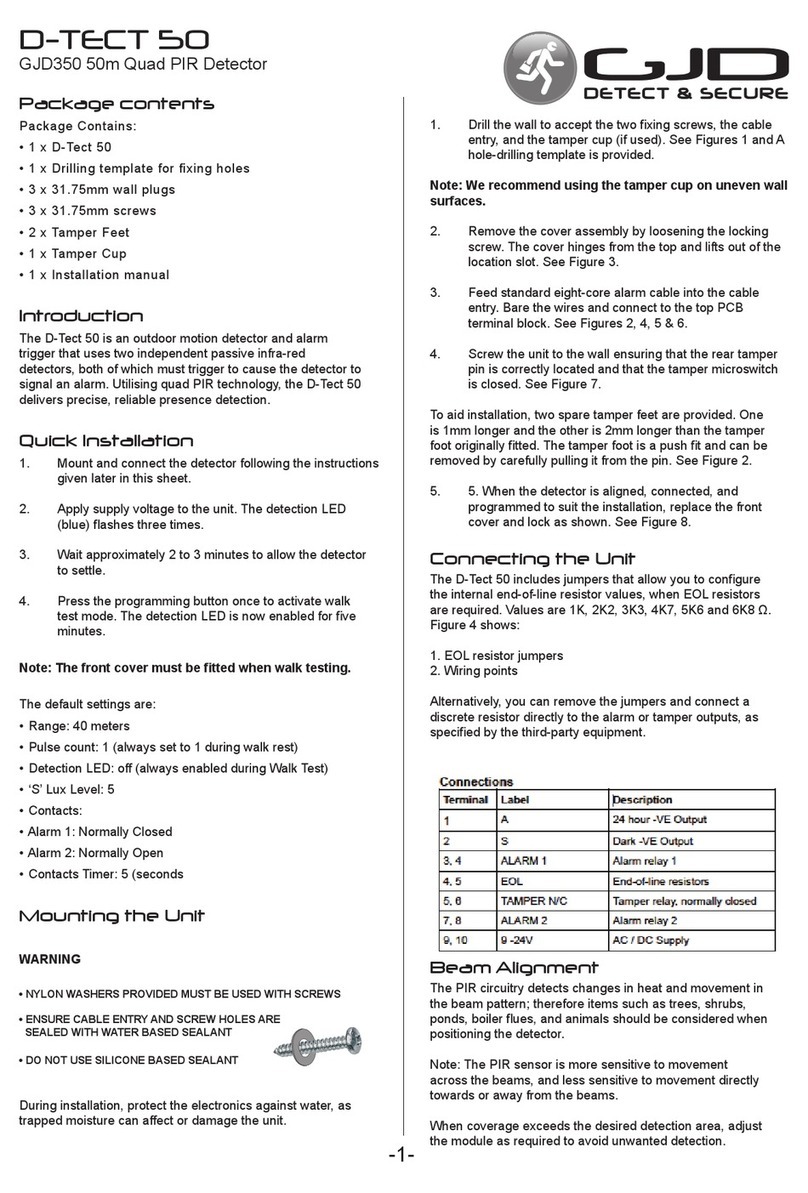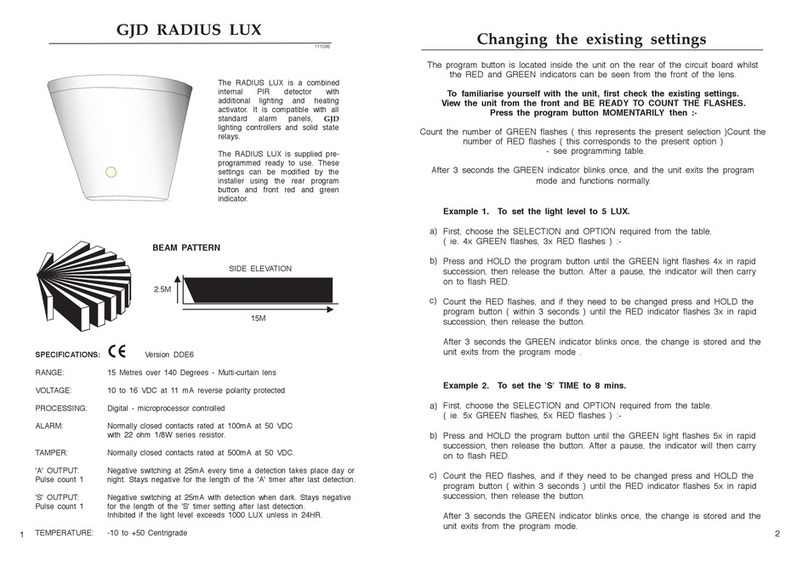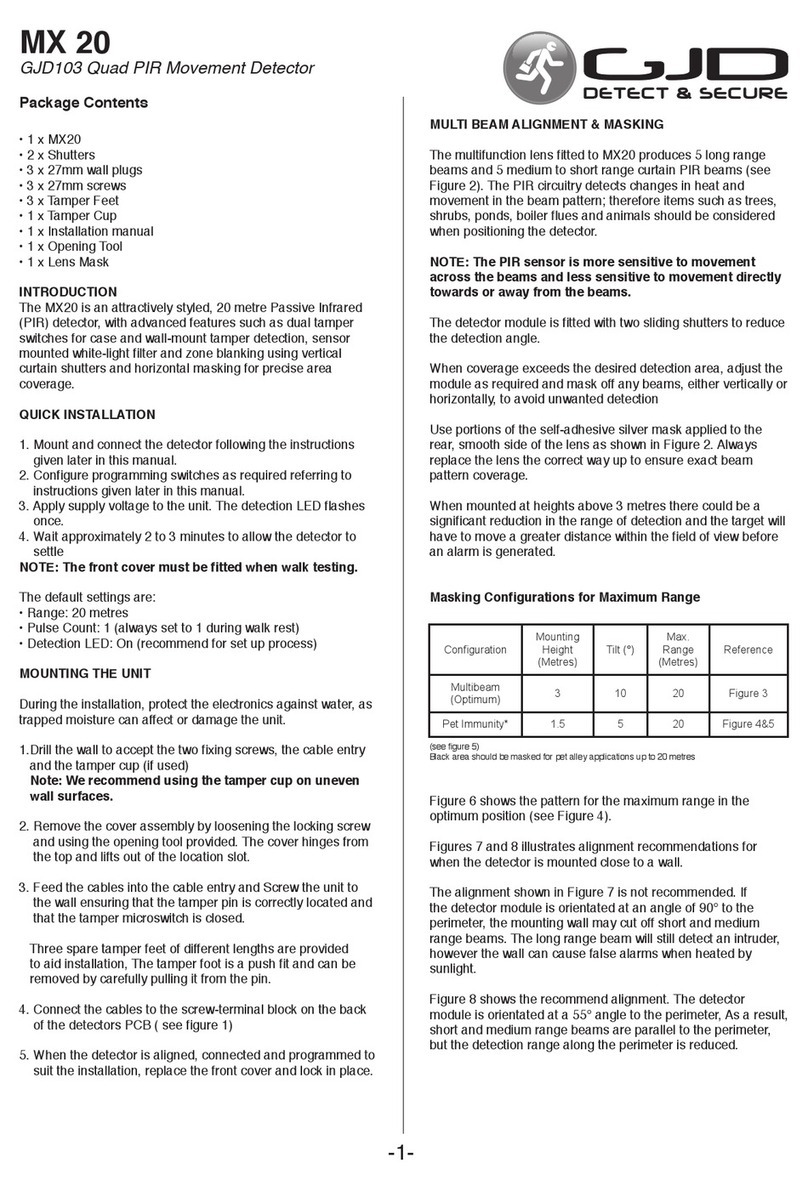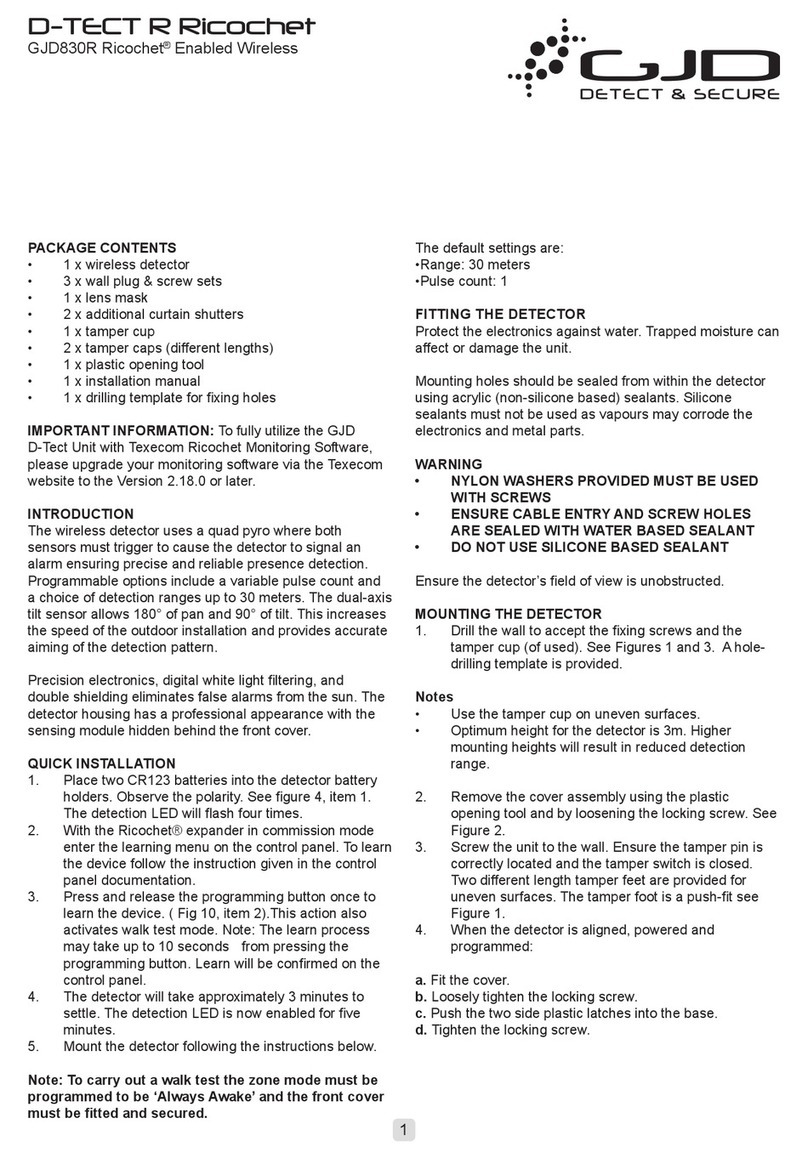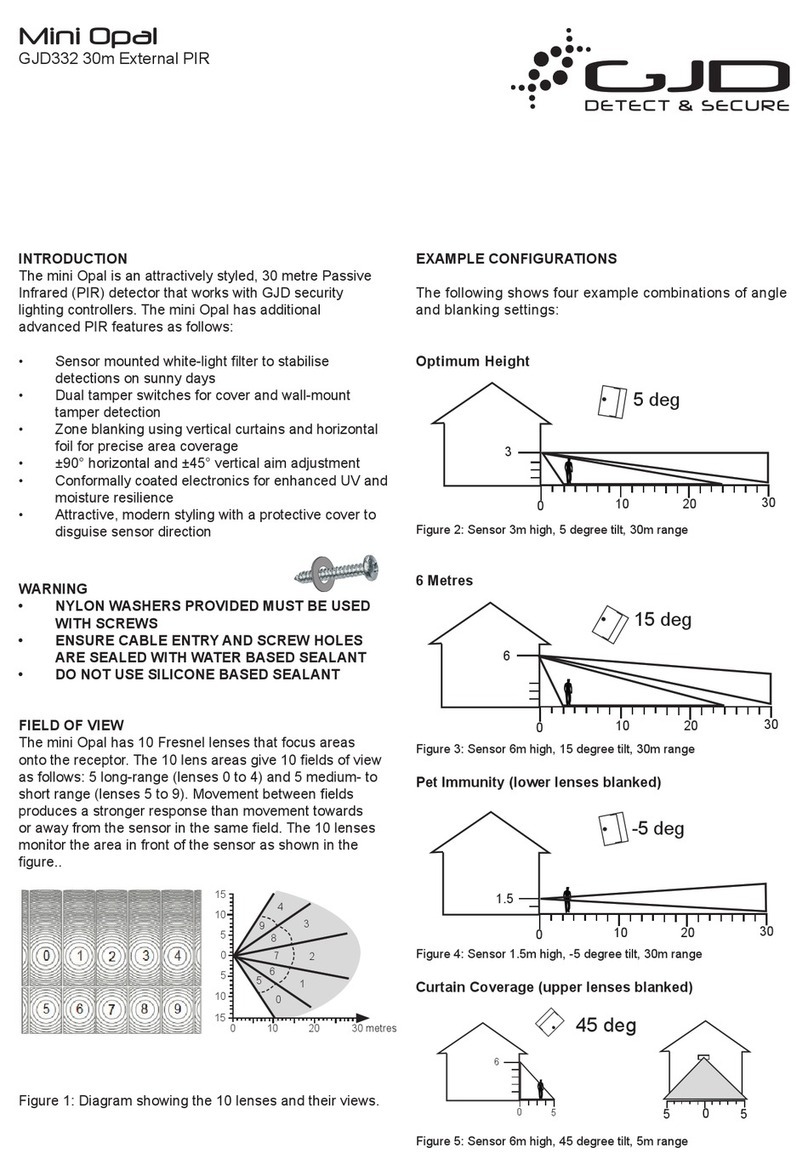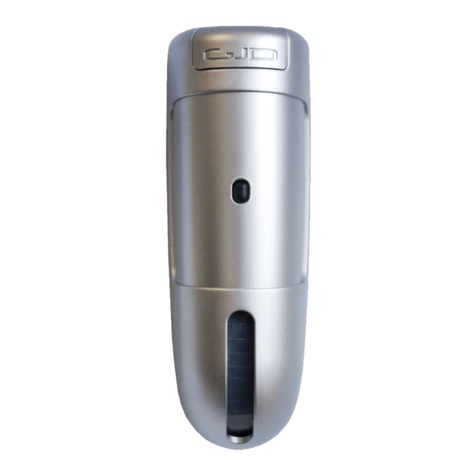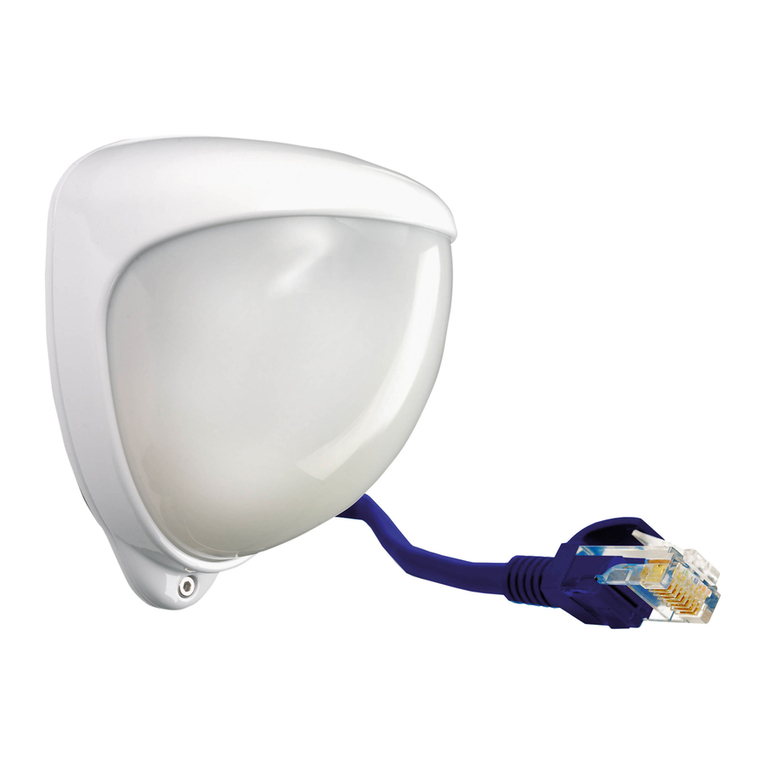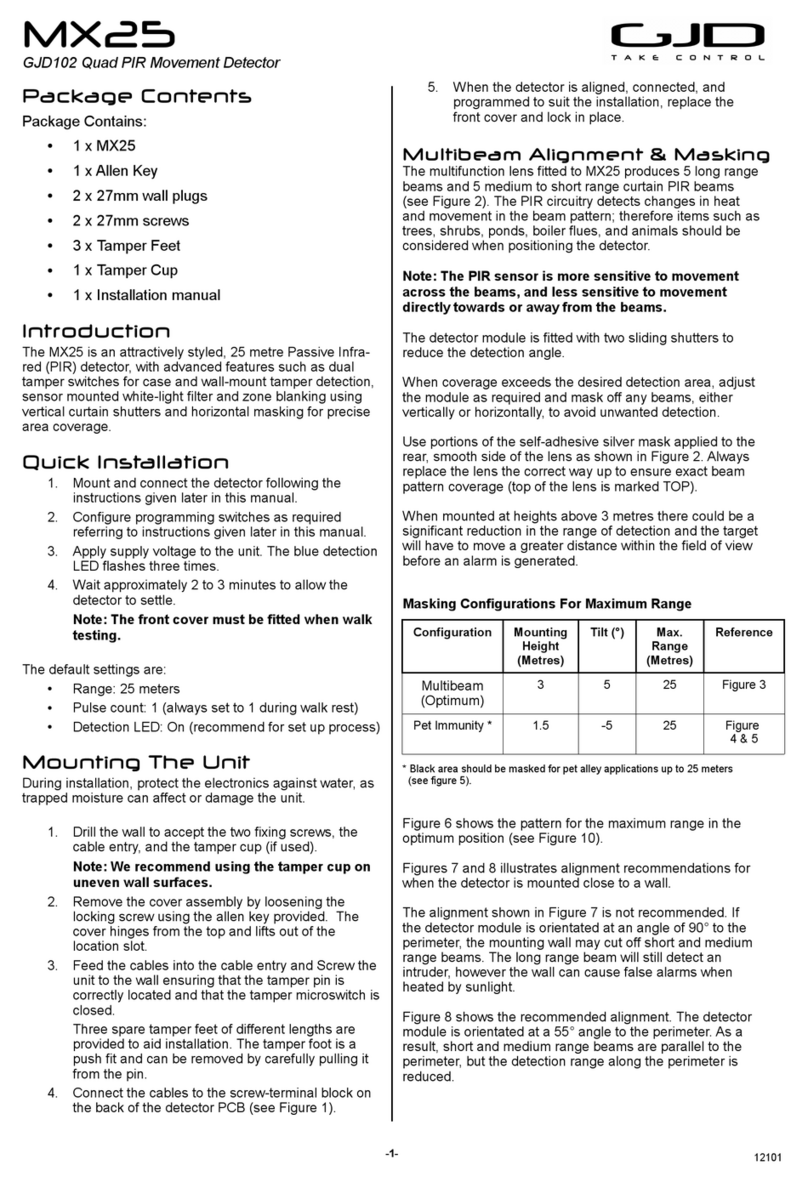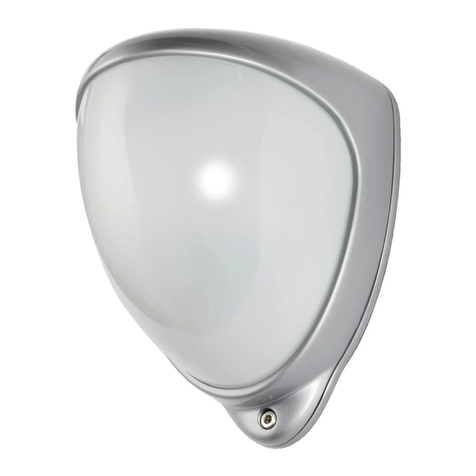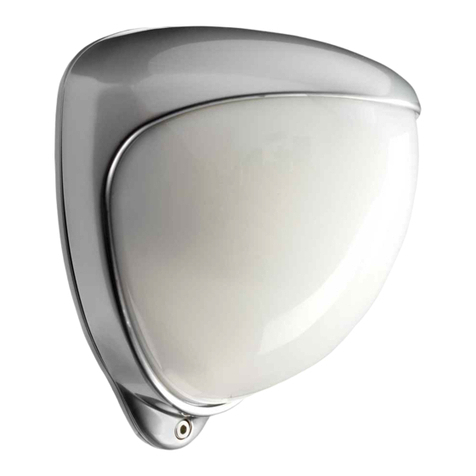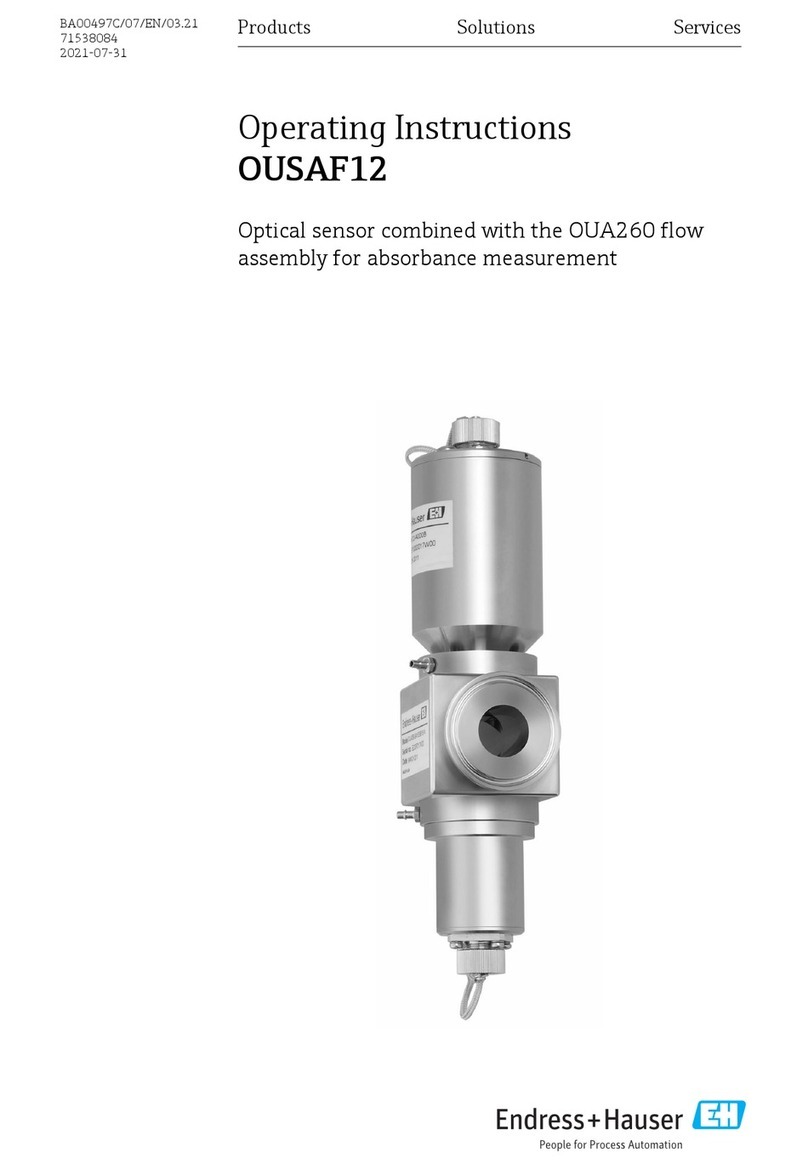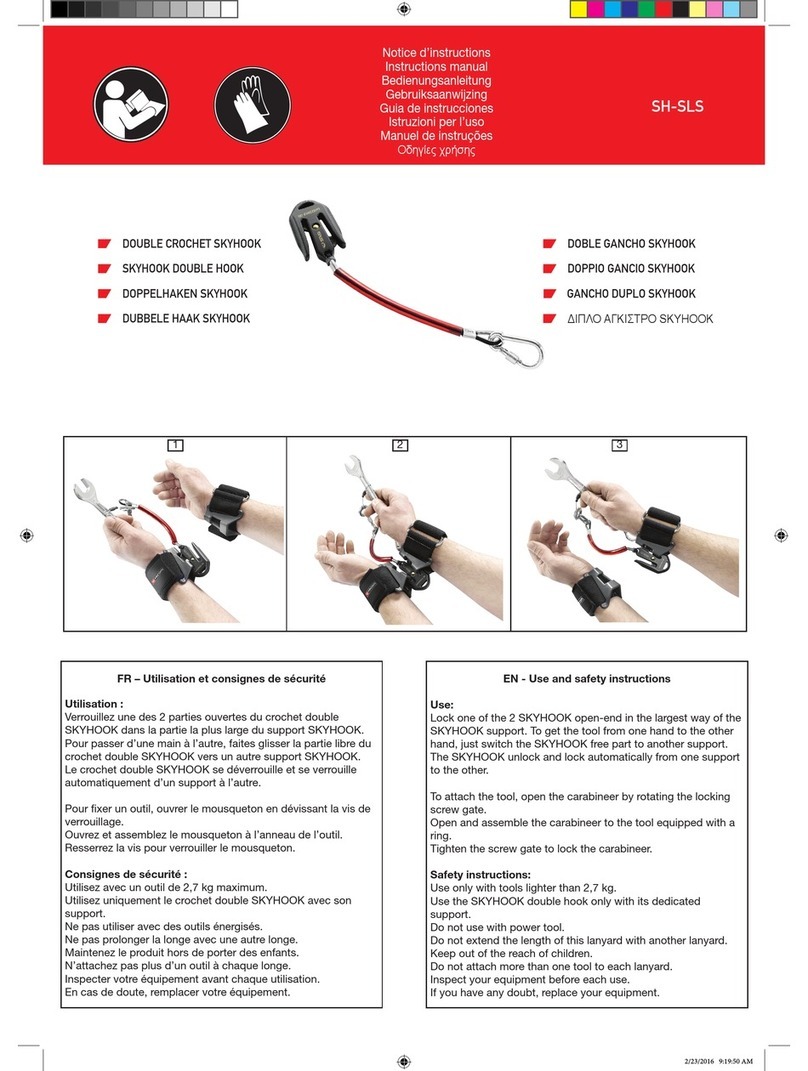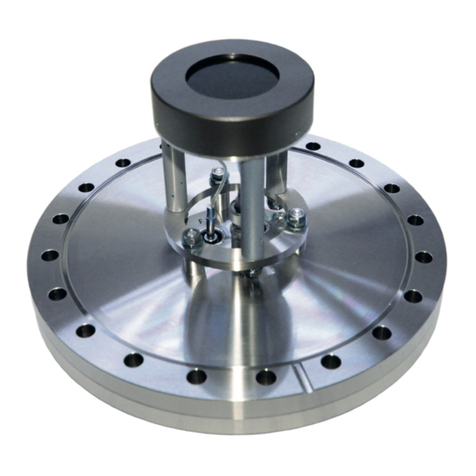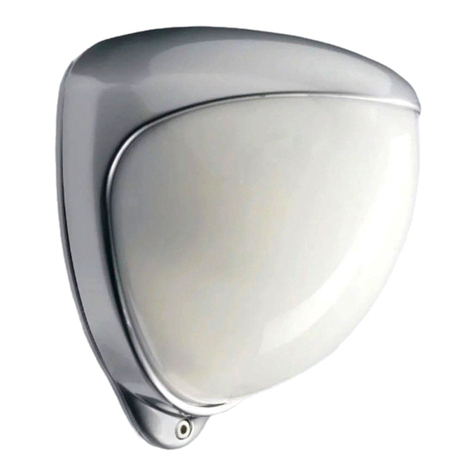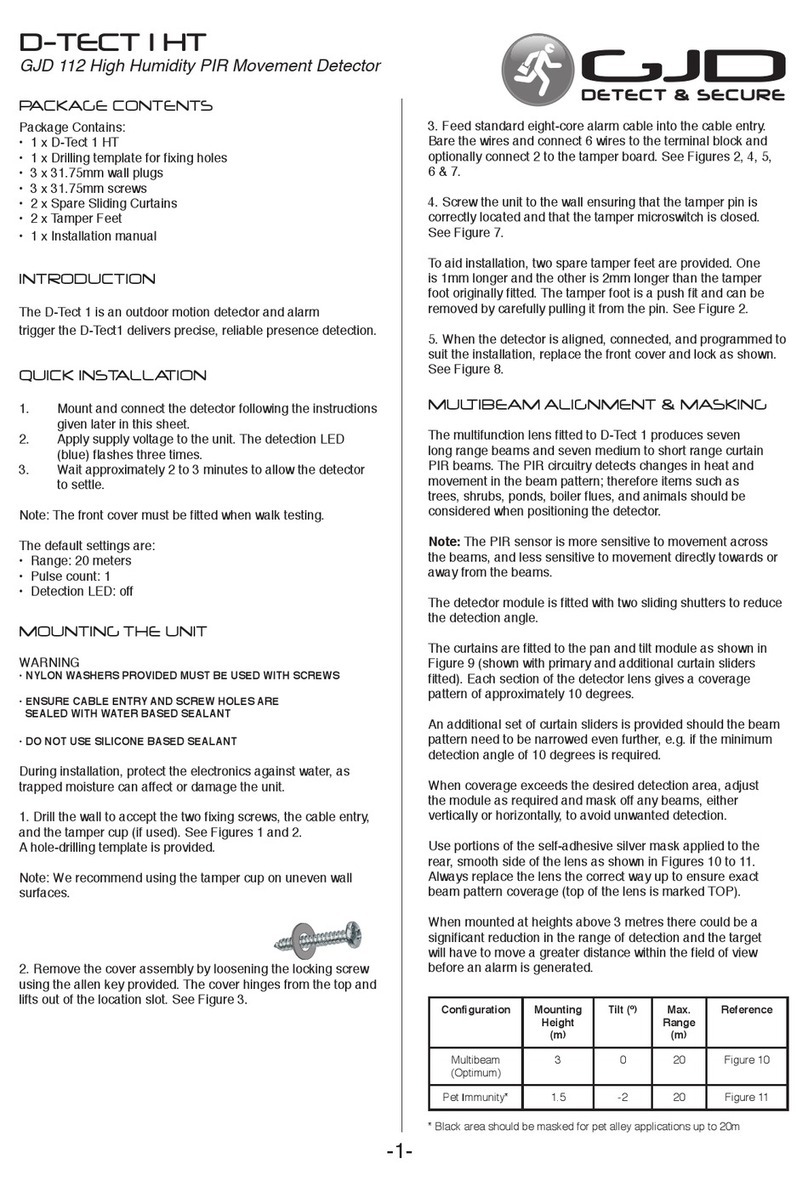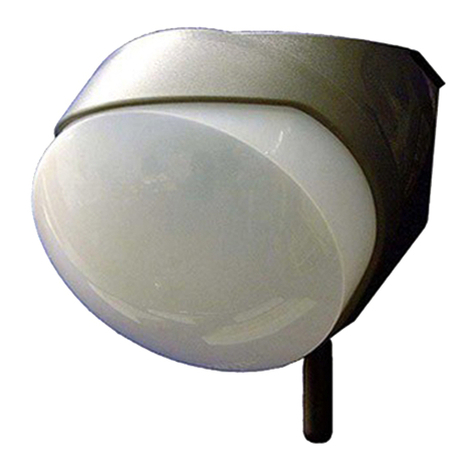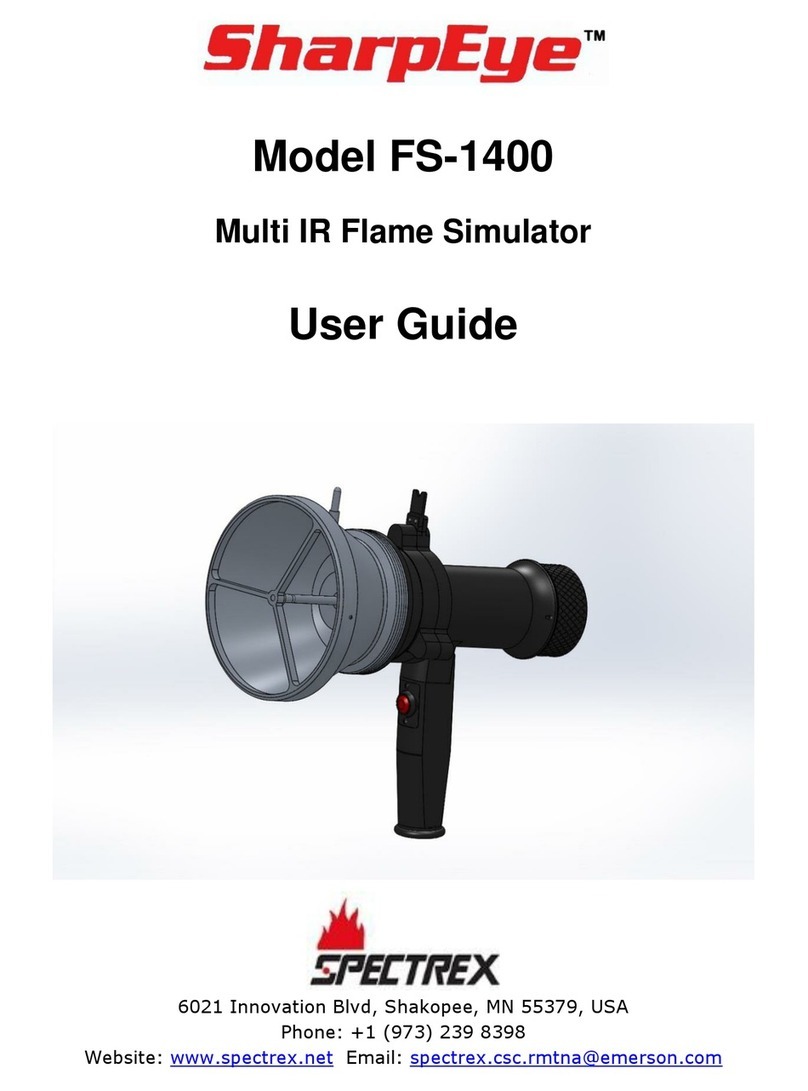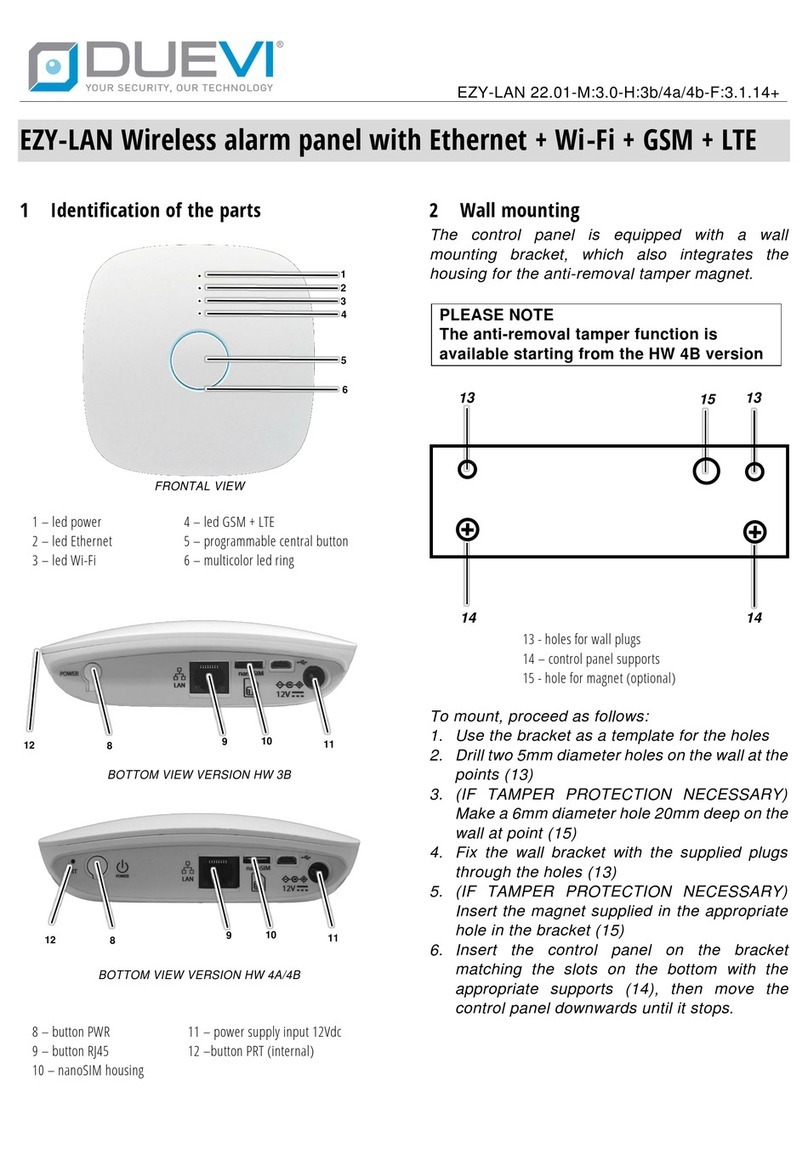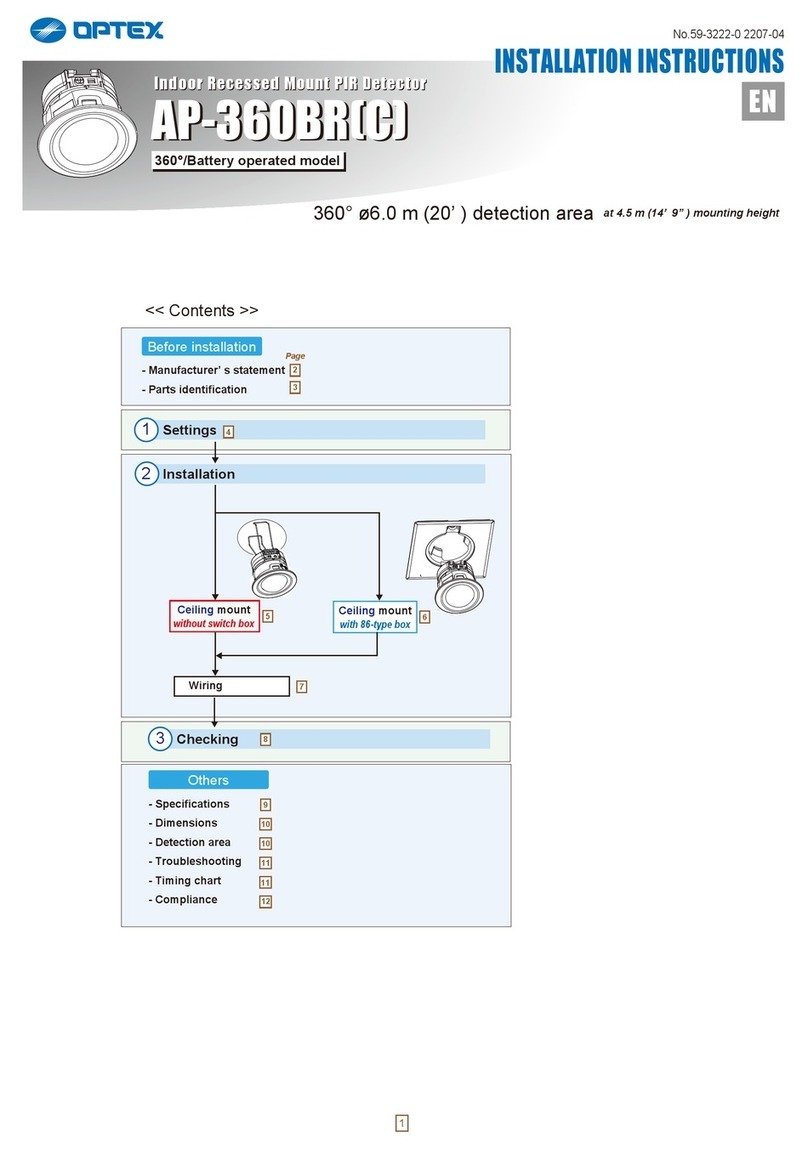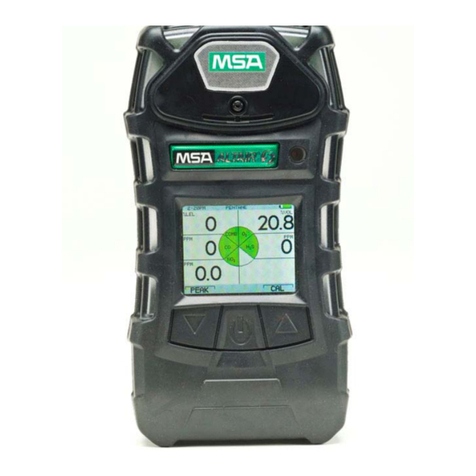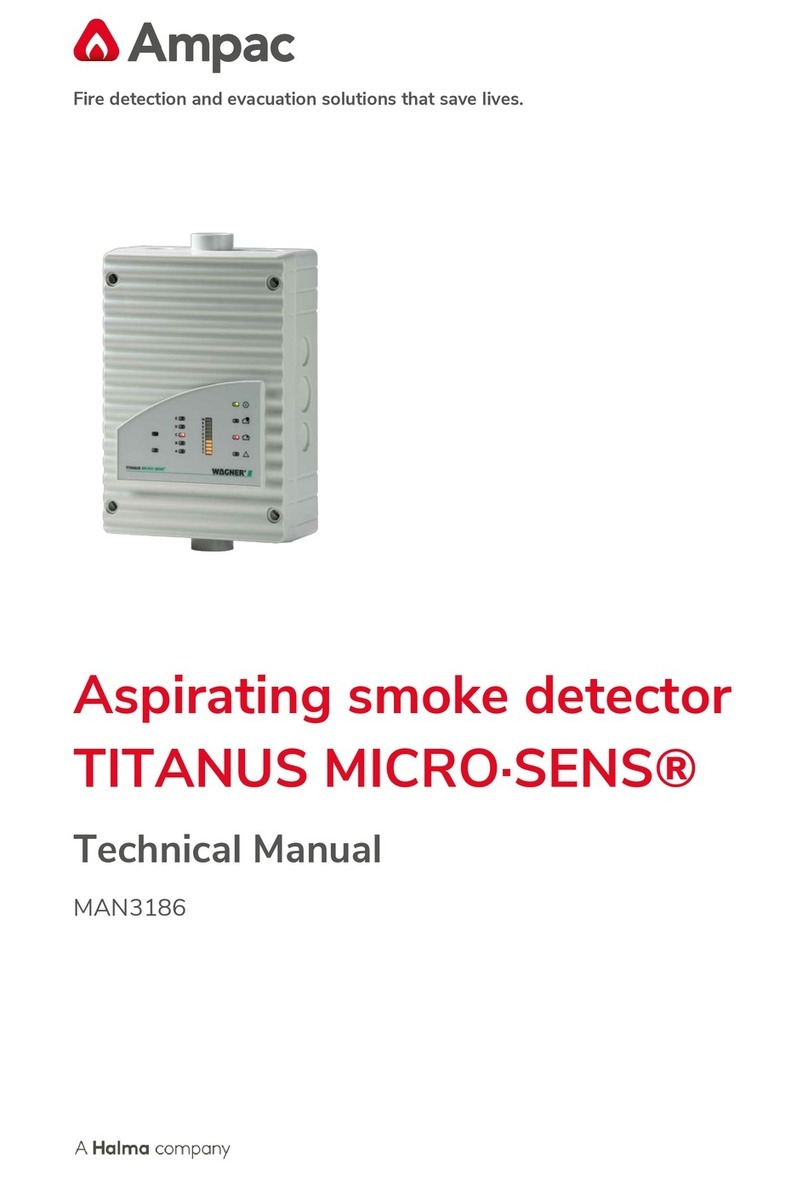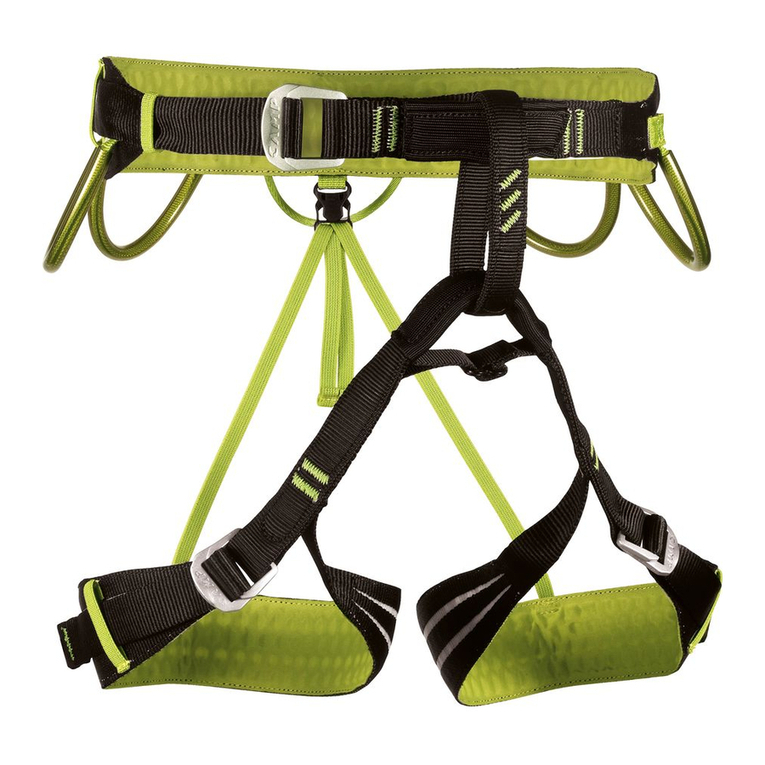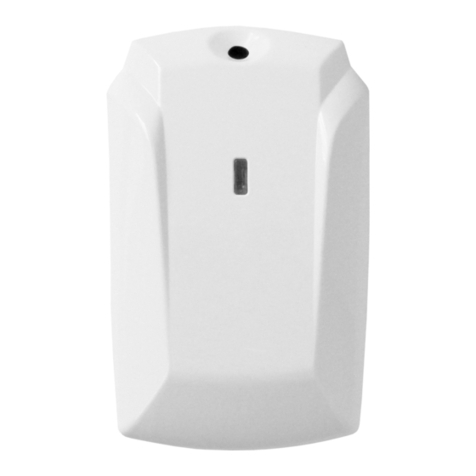Page 4 of 5 September 2013 Rev 4
Note: To carry out a walk test the zone mode must be
programmed to be ‘Always Awake’ and the front cover
must be fitted and secured.
The default settings are:
• Range: 40 meters
• Pulse count: 1
Fitting the detector
Protect the electronics against water. Trapped moisture can
affect or damage the unit.
Mounting holes should be sealed from within the detector using
acrylic (non-silicone based) sealants. Silicone sealants must
not be used as vapours may corrode the electronics and
metal parts.
Ensure the detector's field of view is unobstructed.
Mounting the detector:
1. Drill the wall to accept the fixing screws and the tamper
cup (if used). See Figures 1 and 3.
A hole-drilling template is provided.
Notes
• Use the tamper cup on uneven surfaces.
• The optimum mounting height using the wide angle
Lens 1, fitted as standard, is 3m. Higher mounting
heights will result in reduced detection range and the
target will have to move a greater distance within the
field of view before an alarm is generated. The
maximum height for the narrow width Lens 2 is 2.6m.
2. Remove the cover assembly using the plastic opening tool
and by loosening the locking screw. See Figure 2.
3. Screw the unit to the wall. Ensure the tamper pin is
correctly located and the tamper switch is closed.
Two different length tamper feet are provided for uneven
surfaces. The tamper foot is a push-fit see Figure 1.
4. When the detector is aligned, powered and programmed:
a. Fit the cover.
b. Loosely tighten the locking screw.
c. Push the two side plastic latches into the base.
d. Tighten the locking screw.
Batteries
Only use CR123 3 V Lithium batteries.
Observe correct polarity when fitting.
Battery safety information
• Do not put in a fire
• Do not charge
• Do not heat
• Do not short circuit
• Do not disassemble
• Only fit batteries of the same type and voltage
To preserve battery life the zone mode must be programmed
to be “Auto” which introduces a 3 minute sleeptime.
Beam alignment and masking
The PIR circuitry detects changes in heat and movement in the
beam pattern. The presence of trees, shrubs, ponds, boiler
flues, black tarmac and animals should be considered when
positioning the detector.
PIR sensors are more sensitive to movement across the
beams and less sensitive to movement directly towards or
away.
Figures 7, 8, 9 &10 show typical beam patterns for both the
wide and narrow lenses.
Programming
Figure 11 shows the position of the programming button (2)
and the programming LED (1).
Table 1: Programming settings
•Default settings
Pulse count is the number of detections before signalling an
alarm. Pulse count 1 is most sensitive.
Changing settings:
1. Press the programming button once for range and twice
for pulse count.
2. Wait until the programming LED turns off (typically
4 seconds).
3. Count the number of times the LED flashes to determine
the current value for that option.
4. Press the programming button to select the value number
for the new setting. E.g. to change the range to 20m,
press twice.
The LED blinks twice to indicate that the new value was set.
Programme settings are stored in non-volatile memory.
Resets
1. Remove the batteries.
2. Press and hold the programming button (See Figure 11,
item 2).
3. Refit the batteries.
4. After the programming LED has flashed, release the
programming button.

